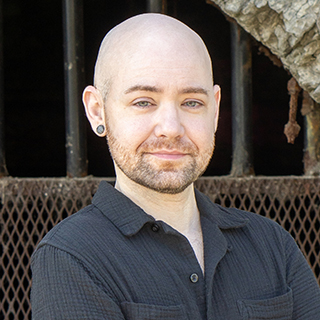When we’re short on connection, we end up isolated. The pandemic accelerated an already-growing epidemic of loneliness in the US. According to that linked Harvard study, chances are that at least 1 in 3 people reading this are experiencing serious loneliness—a lack of connection. So here are some ways to change this for yourself.
- First, explore your own boundaries. What do you want and need from others? What are you prepared to give, and where are the limits of your capacity for giving? If you’re to build true connection, you’ll need to know these things about yourself so you don’t fall into the trap of serving a certain role or casting people in certain roles that limit everyone’s ability to be open.
It can seem hard to figure out boundaries when you don’t have people around to do this with. But you can start with yourself. What do you want and need from yourself (hobbies, sleep, types of food, work-life balance)? When do you hit your energetic and physical limits, and how can you start to respect those limits? I know that plenty of you probably have a revenge procrastination issue, for instance, which is an example of pushing past your own limits because you haven’t met your own wants and needs.
And then think about relationships with family members: what great fodder for figuring out your own limits! With the folks who might expect too much, or the wrong things, from us, learning our boundaries can entirely change our relationships—if not the ones we learn from, then others in our lives.
- Consider who’s in your life. If you’re lonely, the people you already feel close to—or are supposed to feel close to—are simply not meeting your needs for connection. That doesn’t mean there’s anything wrong in those relationships, simply that taken together there’s not enough trust, openness, vulnerability, or witnessing to meet your needs.
Are there friends you’d like to know better? Acquaintances or friends of friends you’ve always been curious about? People at work you have felt affinity with? Family members you prefer over others? These are all opportunities for new connections.
Then comes the work of connection itself.
- Be curious about others. For some of us, this will involve learning new skills. Learn to be curious about others and to listen well. This is not a skill taught in school, or often at home. You’ve probably heard of active listening, which is much more than simply making good eye contact and rephrasing what you hear. Active listening involves striving to understand the feelings behind the words, inviting further sharing, and demonstrating that you hear or understand the other.
Some ways to become a better listener are to ask open-ended questions, encourage the speaker to share more detail, check for understanding by rephrasing what you’ve heard, and join the other where they are instead of trying to get them to be somewhere else. This last one is particularly important when sharing about vulnerable topics. Rather than trying to cheer someone up when they’re struggling, be in a space of empathy with them and let them know you see the struggle.
- Learn to be vulnerable. Openness to the other is half the equation of connection; the other half is to open yourself. There are so many reasons it’s hard for us to be vulnerable: rejecting or critical parents and siblings, dogmatic approaches to education, mean friends, social conditioning, various types of traumas. But we can move forward and learn to be vulnerable in our adult lives, with care and pacing. I suggest not doing this all at once; rather, take incremental steps as you build trust and safety with another person.
Vulnerability involves sharing your thoughts and emotions, asking for what you need, admitting your own mistakes, and holding your own boundaries. It’s hard and often scary, but it also leads to greater intimacy and trust, more self-acceptance, and more access to the full range of emotions. Remember that courage is not the absence of fear, but rather the choice to do it anyway (whatever “it” is).

